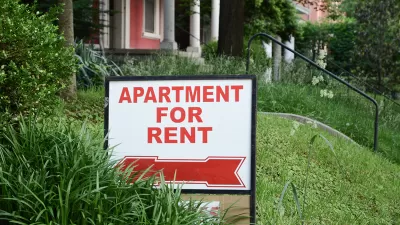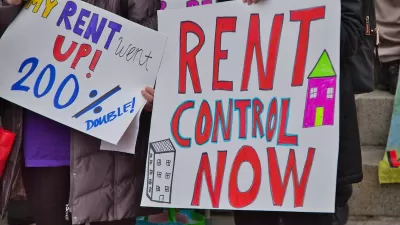Explore the balance between rent control policies and market dynamics, analyzing how different models impact housing affordability and real estate investment.

Rent control policies are regulations designed to cap the amount landlords can charge to rent a property. They aim to keep housing affordable and prevent displacement.
These policies come in various forms, from strict caps on increases to more flexible models balancing tenant protection with market incentives. Understanding the impact of rent control on housing markets is crucial because it affects the availability and quality of rental units and the financial viability for landlords and developers.
Types of rent control models
Different rent control models vary in their approaches and impacts on the housing market. Understanding them helps clarify how they balance tenant protection with market health and why some may be more effective than others in specific contexts.
First-generation rent control
First-generation rent control — often known as “hard” rent control — sets strict limits on rent increases, essentially freezing them at a certain rate regardless of market changes. This model is characterized by rigidity and protects tenants by preventing sudden rent hikes.
While it offers immediate affordability and stability for tenants, it also has significant drawbacks. It can discourage landlords from maintaining or upgrading their properties and reduce the incentive for new housing development. These factors lead to housing shortages and potential black markets for rental units.
Second-generation rent control
Second-generation rent control or “soft” rent control allows moderate rent increases tied to inflation or other economic indicators. It offers a more flexible approach compared to first-generation models.
This system often includes provisions for landlord cost recovery and maintenance incentives, balancing tenant protection with market viability. An interesting aspect is that, apart from rent, the cost of utilities such as water often rises more quickly than inflation, which can complicate calculations for tenants and landlords.
The pros of second-generation rent control include better maintenance of rental properties and continued investment in new housing. However, it may still lead to gradual housing shortages and can be complex to implement and enforce effectively.
Case studies
Examining real-world examples provides valuable insights into the practical effects of rent control policies.
New York City
New York City has a long history of rent control, dating back to the post-World War II era. Today, the city continues implementing a combination of first- and second-generation rent control models, which impact a significant portion of its rental housing market.
These policies provide stability and protection from rapid rent increases for tenants. This was particularly true during the COVID-19 pandemic, which saw massive unemployment, leaving many with limited income to cover rent and other expenses.
San Francisco
San Francisco has a dynamic history with rent control policies, which have evolved over the years to address the city’s housing crisis. These regulations have seen various amendments to balance tenant protections with market realities.
For example, in 2024, the allowed rent increase percentage is set at 1.7 percent, reflecting efforts to keep housing affordable while acknowledging inflation. This cap offers tenants stability and predictability in a high-demand market, reducing the risk of sudden, unaffordable rent hikes.
Innovative approaches to rent control
Cities are exploring innovative approaches to balance affordability with market sustainability. These strategies offer potential solutions that can better meet the needs of tenants and landlords.
Hybrid models
Hybrid rent control models combine elements of strict and flexible policies to create a balanced approach to protecting tenants while encouraging healthy market dynamics. These models often set moderate caps on rent increases linked to inflation and provisions allowing landlords to pass on some maintenance and improvement costs.
This balance helps ensure rental properties are well-maintained and new housing developments remain financially viable. It addresses the needs of tenants seeking stability and landlords requiring fair investment returns.
Subsidies and incentives
Government subsidies support tenants and landlords, particularly in times of economic hardship. Programs like the Emergency Rental Assistance — which provided over $46 billion during the COVID-19 pandemic — have been instrumental in maintaining housing stability for eligible renters.
These subsidies help cover rent and utility costs, alleviating financial stress and preventing evictions. Effective subsidy programs stabilize the housing market by reducing vacancies and maintaining consistent revenue streams for property owners.
Balancing rent control for sustainable housing markets
Balanced rent control policies create sustainable housing markets, protecting tenants while encouraging investment and maintenance. Stakeholders must consider hybrid and innovative approaches to achieve better market dynamics and ensure affordable housing solutions for all.

Planetizen Federal Action Tracker
A weekly monitor of how Trump’s orders and actions are impacting planners and planning in America.

Map: Where Senate Republicans Want to Sell Your Public Lands
For public land advocates, the Senate Republicans’ proposal to sell millions of acres of public land in the West is “the biggest fight of their careers.”

Restaurant Patios Were a Pandemic Win — Why Were They so Hard to Keep?
Social distancing requirements and changes in travel patterns prompted cities to pilot new uses for street and sidewalk space. Then it got complicated.

Platform Pilsner: Vancouver Transit Agency Releases... a Beer?
TransLink will receive a portion of every sale of the four-pack.

Toronto Weighs Cheaper Transit, Parking Hikes for Major Events
Special event rates would take effect during large festivals, sports games and concerts to ‘discourage driving, manage congestion and free up space for transit.”

Berlin to Consider Car-Free Zone Larger Than Manhattan
The area bound by the 22-mile Ringbahn would still allow 12 uses of a private automobile per year per person, and several other exemptions.
Urban Design for Planners 1: Software Tools
This six-course series explores essential urban design concepts using open source software and equips planners with the tools they need to participate fully in the urban design process.
Planning for Universal Design
Learn the tools for implementing Universal Design in planning regulations.
Heyer Gruel & Associates PA
JM Goldson LLC
Custer County Colorado
City of Camden Redevelopment Agency
City of Astoria
Transportation Research & Education Center (TREC) at Portland State University
Camden Redevelopment Agency
City of Claremont
Municipality of Princeton (NJ)






























